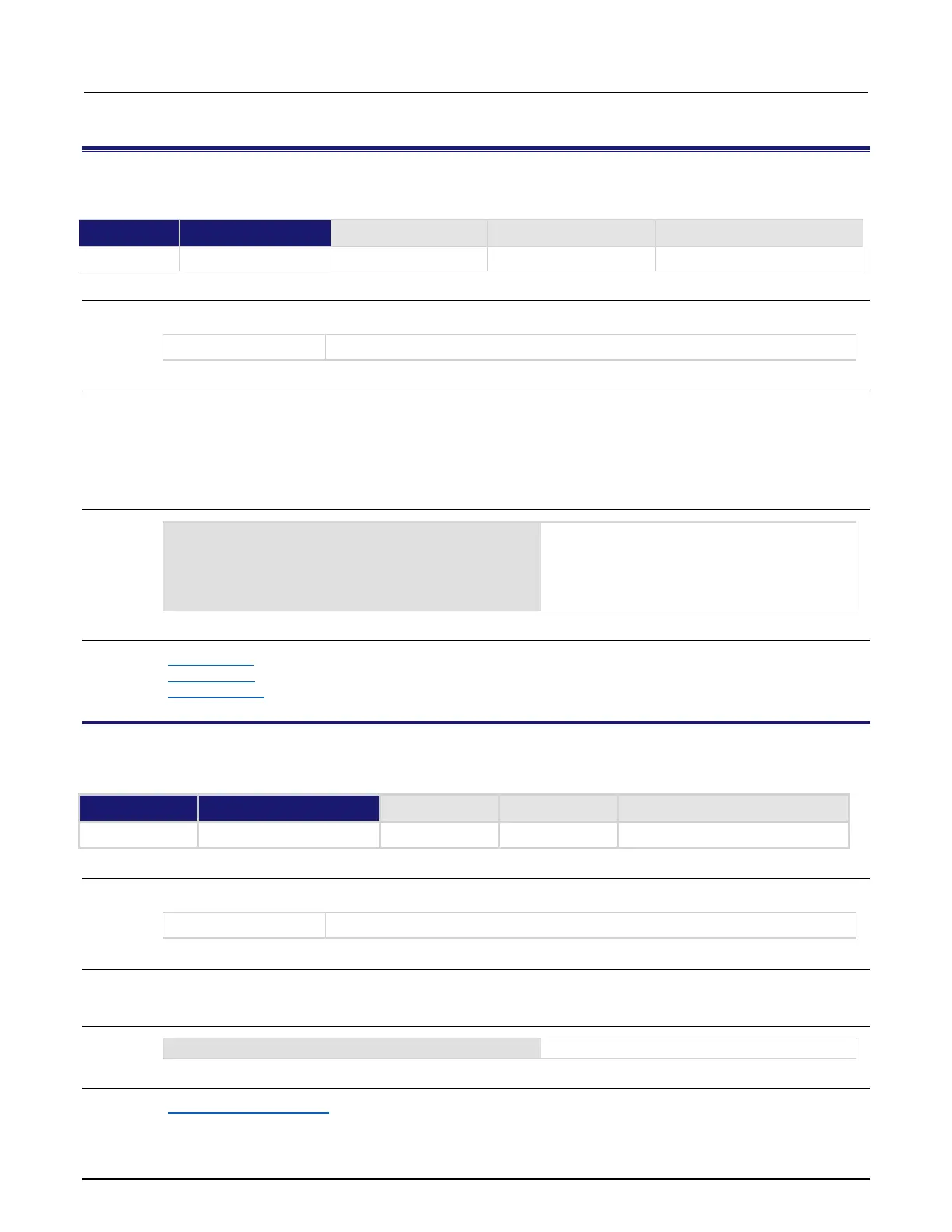Section 11: TSP command reference Series 3700A System Switch/Multimeter Reference Manual
11-116 3700AS-901-01 Rev. D/June 2018
digio.readport()
This function reads the digital I/O port.
Usage
data = digio.readport()
The present value of the input lines on the digital I/O port
Details
The binary equivalent of the returned value indicates the value of the input lines on the I/O port. The
least significant bit (bit B1) of the binary number corresponds to line 1; bit B14 corresponds to line 14.
For example, a returned value of 170 has a binary equivalent of 000000010101010, which indicates
that lines 2, 4, 6, and 8 are high (1), and the other 10 lines are low (0).
Example
data = digio.readport()
print(data)
Assume lines 2, 4, 6, and 8 are set high when
the I/O port is read.
Output:
1.70000e+02
This is binary 10101010
Also see
digio.readbit() (on page 11-115)
digio.writebit() (on page 11-124)
digio.writeport() (on page 11-125)
digio.trigger[N].assert()
This function asserts a trigger pulse on one of the digital I/O lines.
Usage
digio.trigger[N].assert()
Digital I/O trigger line (1 to 14)
Details
The pulse width that is set determines how long the instrument asserts the trigger.
Example
digio.trigger[2].assert()
Asserts a trigger on digital I/O line 2.
Also see
digio.trigger[N].pulsewidth (on page 11-120)

